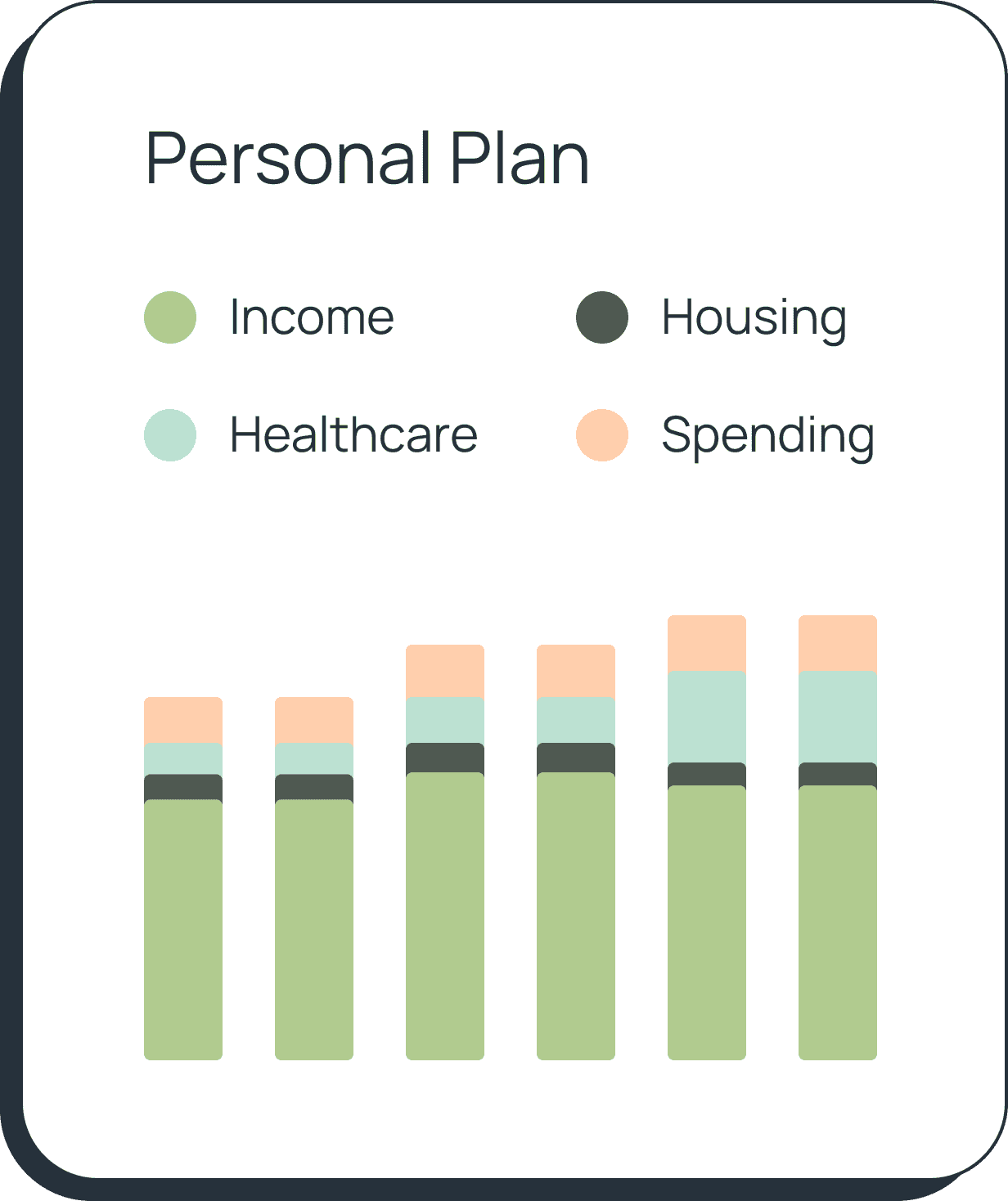Social Security
On October 12, the Social Security Administration held a press release to announce the cost-of-living (COLA) adjustment for 2025. Due to inflation, the COLA is rising this year, so the 66 million Social Security beneficiaries will see a higher benefit starting in January of next year. Read on to learn how the government arrives at a COLA percentage, and how much you should expect your Social Security checks to increase.

C.E Larusso
•
Published October 24th, 2023
Table of Contents
Key Takeaways
The 3.2% increase in 2024 is less than the 2023 increase, which was 8.7%
The average beneficiary will see a $54 increase in their benefit amount
Social Security beneficiaries should expect to receive a COLA notice by mail in December with information about their new benefit amount for 2024
On October 12, the Social Security Administration held a press release to announce the cost-of-living (COLA) adjustment for 2024. Due to inflation, the COLA is rising this year, so the 66 million Social Security beneficiaries will see a higher benefit starting in January of next year. Read on to learn how the government arrives at a COLA percentage, and how much you should expect your Social Security checks to increase.
Cost-of-living Adjustment (COLA) in 2024
The US Social Security administration will be increasing Social Security benefits by 3.2% in 2024, to reflect rising inflation. The cost-of-living adjustment (COLA) is determined based on an average of the inflation readings for July, August, and September, as shared by the Consumer Price Index for Urban Wage Earners and Clerical Workers (CPI-W), published by the Bureau of Labor Statistics. The 2024 COLA adjustment is smaller than last year’s, which was 8.7%.
The chart below provides details on the 2024 COLA calculation:
| Time Period | CPI-W 2022 | CPI-W 2023 | Difference |
|---|---|---|---|
| July | 292.219 | 299.899 | 2.6% |
| August | 291.629 | 301.551 | 3.4% |
| September | 291.854 | 302.257 | 3.6% |
| October | 291.901 | 301.236 | 3.2% |
You can see from the chart that the CPI-W rose 2.6% in July, 3.4% in August, and 3.6% in September, creating a 3.2% average. The 3.2% cost-of-living adjustment will affect Social Security beneficiaries in January 2024. Higher payments to SSI recipients will begin on December 29, 2023.
How Inflation Affects Cost-of-Living Adjustments (COLA)
The US Bureau of Labor Statistics (BLS) determines the CPI-W (Consumer Price Index for Urban Wage Earners and Clerical Workers). The CPI-W is used by the Social Security Administration to calculate COLA increases.
BLS looks at the average cost that workers pay for a selection of key consumer items every year, then calculates how these prices change year after year. The changes are represented by a percentage that shows the change in daily cost-of-living for Americans. When prices rise, the country is experiencing a period of inflation. When prices drop, the country is experiencing a period of deflation.
The CPI data that the BLS reports represents the current costs, as compared to previous costs, of a range of goods. This “basket of goods” includes 200 common consumer items, grouped into the following categories:
- Housing: rent, phone service, fuel oil, electricity
- Food and beverages: bread, chicken, coffee, cereal
- Clothing: t-shirts, dresses, jewelry
- Transportation: airline fares, gas prices, car insurance
- Medical care: prescription drugs, eye care, hospital rooms
- Recreation: movie tickets, musical instruments, video game consoles
- Education and communication: newspapers, textbooks, cell phones
- Other goods and services: haircuts, college tuition, bank fees
A full description of the categories and what is included in them can be found on the Bureau of Labor Statistics’ website.
The CPI-W uses the same data as the BLS, but focuses specifically on certain groups of consumers—households with at least 50% of the household income coming from clerical or wage-paying jobs, where at least one of the household’s earners was employed for 37 or more weeks of the year. Generally speaking, the CPI-W is considered to be a sampling of about 30% of the population.
Don’t let healthcare costs ruin your retirement.
10 Reasons You Need a Financial Advisor for RetirementHow Much More Money Will Social Security Beneficiaries Receive in 2024?
In 2024, the COLA increase for Social Security beneficiaries is 3.2%. The average beneficiary will see a $54 increase in their benefit amount. The average Social Security benefit, as of August 2023, was $1,705.79; with the increase, that would jump to $1,760.30 per month.
How this compares with previous years: the 3.2% increase is smaller than the increase for 2023 (8.7%) and 2022 (5.9%), but it is still an unusually large jump; the 10-year average is 2.8%, with most years at 2% or less.
Social Security beneficiaries should expect to receive a COLA notice by mail in December. This notice will detail your new benefit amount for 2024. Beneficiaries can also access this information in the message center of their ‘my Social Security’ account.
How This COLA May Impact Social Security’s Solvency
Based on annual government reports, the Social Security Old-Age and Survivors Insurance Trust Fund, responsible for disbursing Social Security benefits, is projected to run out of funds in 2033. This is one year earlier than the prediction made in 2022. When this fund is exhausted, the system will have to rely on incoming tax revenue to meet the needs of beneficiaries. In the event that the tax revenue falls short, Congressional intervention will become necessary.
Due to the recent two years of significant inflation, there is concern that the Fund may be depleted even earlier than initially estimated. To address this issue, one adjustment has been made: raising the maximum earnings subject to the Social Security payroll tax. Previously set at $147,000, it has now been increased to $160,200. This change came into effect on January 1, 2023.
Remember that Social Security’s annual COLA increases are not raises; instead, think of them as back pay for the loss of buying power you experienced in the previous year. Talk to a retirement advisor to discuss how to get the most out of your investments and save smartly while inflation continues to be on the rise. Some allocations, like Inflation Protected Bond Funds, will actually earn you money during periods of inflation.
Frequently Asked Questions
Are future Social Security benefits adjusted for inflation?
Yes. COLA is assessed every year and directly accounts for inflation (CPI-W). While most years see some sort of increase, there have been some years (2009, 2010, 2015) when the rate stayed steady with no change. How often are Social Security benefits adjusted for inflation? The cost-of-living adjustments are reviewed and revised every year, with the new rate announced in October. This year’s announcement was October 12, 2023.
How does this affect retirees?
Most retirees spend the majority of their money on four things: housing, transportation, food and healthcare. As we approach periods of hyperinflation, it’s important to assess the cost of these necessities and note how much they are rising to reduce spending where it matters. Three of those categories, for instance, remained relatively low through the month of May, though there was a big jump in travel costs. Given that logic, it might make sense to put off any personal travel for a while. Logging your spending and reviewing your logs regularly will help you strategize for the future.
If you can, it makes sense to delay cashing in on your Social Security benefits as long as possible, ideally until you are 70 years old, when the yearly benefit increases cease. That way, you will receive the maximum amount owed to you.
Share this advice

A professional content writer, C.E. Larusso has written about all things home, finance, family, and wellness for a variety of publications, including Angi, HomeLight, Noodle, and Mimi. She is based in Los Angeles.
Share this advice

A professional content writer, C.E. Larusso has written about all things home, finance, family, and wellness for a variety of publications, including Angi, HomeLight, Noodle, and Mimi. She is based in Los Angeles.
Free Retirement Consultation
Still have questions about how to properly plan for retirement? Speak with a licensed fiduciary for free.






